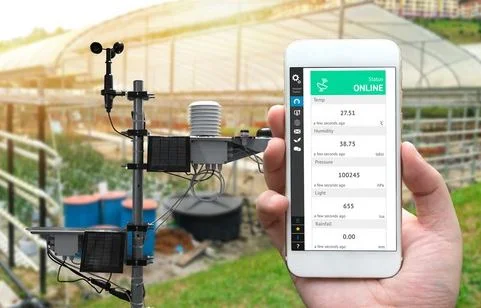How to Set Up a Personal Weather Station?
You don't need to be meteorological to set up a personal weather station, which contains a variety of scientific equipment. The common home weather station setup method is quite simple because they're meant to be user-friendly.
Certain weather stations need minor assembly. However, the majority are ready to use it immediately. Afterward, all left is to pick a suitable site for the weather station and mount this on a post or pole. Some indoor weather stations require pairing and connection to the interior base station. You may need to download apps to your smartphone.
Here's how you can make your weather station:
If necessary, connect your sensor array using individual sensors.
- Find a location for your weather station.
- Set up your weather station just at the desired location.
- Connect your console, base station, and sync module, then turn it on.
Watch the weather station's displays console via an associated app to see whether the base station or sensor assembly and specific sensors were close enough to interact.

Where Should a Home Weather Station Be Placed?
The most crucial aspect of set up a personal weather station is deciding where to put it. Since you're choosing a location to place the weather station, this procedure is called "siting." If your weather station includes multiple sensors, you can choose whatever best locations for each sensor to be installed.
If your weather station has a single installation with all the sensors, you'll need to choose a location that allows for the most accurate data from every one of them.
The most popular weather station sensors are shown here, along with recommendations for where they should be placed.
Temperature: Without a radiation shield, the sensor must never be exposed to direct sunlight. It must be fifty feet from the next paved surface and five feet above the ground, including five feet above the roof when the weather station has been on the roof.
Humidity: To avoid erroneously high readings, keep humidity sensors approximately 50 feet away from trees and water bodies.
Rain: Placement in the rain shadow of fences, buildings, trees, and other obstacles is not recommended. Keep your sensor at least five feet away from anything above ten.
Wind: An anemometer should be placed approximately 30 feet above ground level and at least seven feet above any surrounding impediments such as trees and buildings. If it isn't an option, keep it as far away from obstacles as feasible.
Where Should a Home Weather Station Be Installed?
A home weather station should be placed at the center of a big field, away from any local impediments, and set on a pole at least seven feet tall. For most people, it is not a solution.
Here are a few good spots to put a weather station at home:
- Flagpole
- Free-standing post and a pole at least five feet off the ground, much further away from adjacent obstacles as feasible.
- On the roof of a structure (at least five to seven feet above it)
- A home or some other building's external wall, with a mounting arm which raises the sensors unit just above the roofline
- Fence
 Published by: Blaze
Published by: Blaze Brand: Smart Devices
Brand: Smart Devices Last Update: 2 weeks ago
Last Update: 2 weeks ago
 Related Blogs
Related Blogs
Top 11 Best Smart Home Devices & Systems of 2026
How to Use Google Lens on iPhone?
Top 7 Best Smart Home Security Systems of 2026
How to Connect Philips Hue Devices?

Trending Searches
-
How to Reset Honeywell Thermostat WiFi? 19 Jun, 25
-
How to Watch StreamEast on FireStick? 12 Nov, 25
-
Google Nest Mini vs. Amazon Echo Dot 2026 12 Sep, 25
-
Why Does My Nest Thermostat Say Delayed? 03 Nov, 25
-
How do I Connect My Nest Yale Lock to Alexa? 08 Jul, 25
-
Alexa Lights Unresponsive? Fix it 29 Nov, 25
-
Why Is Ring Camera Sound Not Working? 29 Nov, 25

Recent Post
-
How to Install Kodi on Amazon Fire Stick? 08 Dec, 25
-
How to Connect Govee Lights to Alexa? 08 Dec, 25
-
How to Connect Kasa Camera to WiFi? 07 Dec, 25
-
How to Fix Eero Blinking White Problem? 07 Dec, 25
-
How to Reset Eero? 07 Dec, 25
-
Why is My ADT Camera Not Working? 06 Dec, 25
-
How to Connect Blink Camera to Wifi? 06 Dec, 25
-
How To Reset Danfoss Thermostat? 05 Dec, 25
Top Searches in smart devices